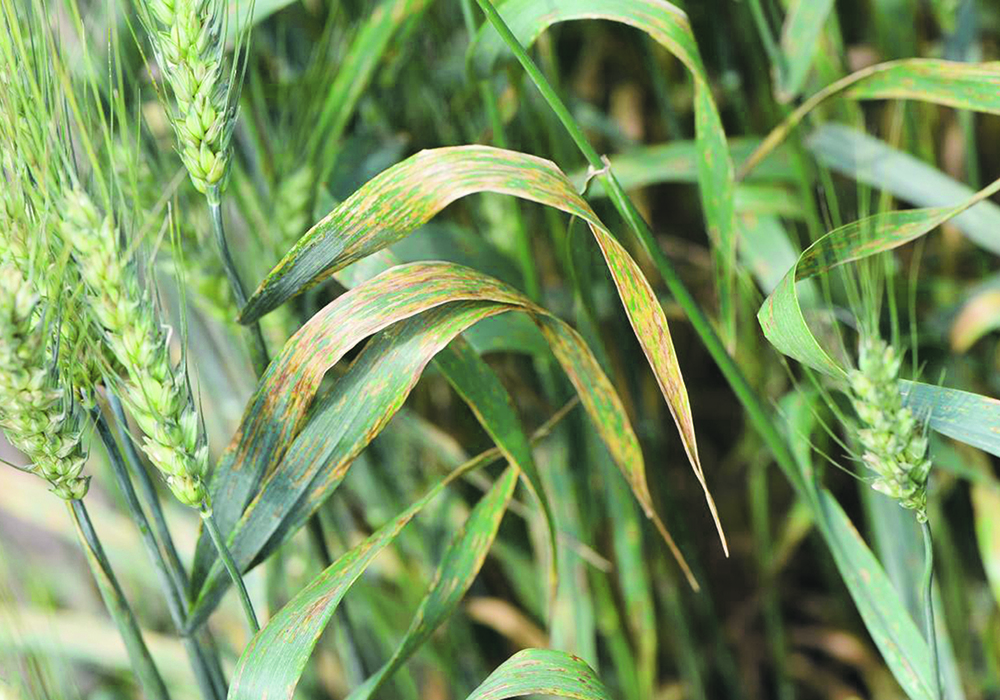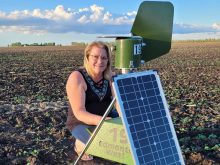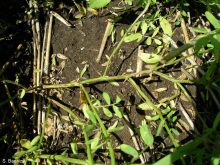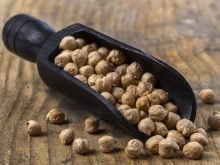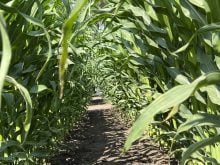Normally in a dry year, disease is not a major concern for cereal growers in Western Canada.
But an emerging disease did cause issues for a number of growers in Alberta.
“Bacterial leaf streak was a significant problem in many irrigated areas of southern Alberta in 2021,” said Mike Harding, a plant pathologist with Alberta Agriculture in Brooks. “There were dozens of farm units, and thousands of acres affected, with some fields seeing economic levels of disease.”
Bacterial leaf streak may be unfamiliar to many wheat growers in Western Canada, as bacterial diseases are mostly an issue in citrus, potatoes and vegetable crops. Prairie farmers typically worry about fungal diseases like fusarium head blight or tan spot.
BLS is caused by a group of bacteria called Xanthomonas translucens. A few different pathovars, or strains within the group, can cause damage on cereal crops.
The bacterium persists on crop residue or more likely arrives in the field from a wheat seed contaminated with BLS. As well, wind and rain move the bacteria from plant to plant.
The defining symptom of BLS is dark green, water-soaked streaks on the leaf. Plant pathologists sometimes describe it as shiny glaze of bacteria on the leaf.
“If the crop is dry (and) you take that leaf tissue and you angle it in the sun. you may see masses of the bacterial cells on the leaf surface,” said Kelly Turkington, plant pathologist with Agriculture Canada in Lacombe, Alta. “It gives the leaf a bit of a glazed doughnut appearance…. You’ll see a shellac or coating on the lesions.”
When the lesions grow on the leaves, it reduces photosynthesis and robs the wheat crop of yield.
Researchers with North Dakota State University estimate that BLS can cause yield losses of 15 percent. In more severe cases, wheat yield can decline by 30 percent or more.
A few years ago, nobody talked about bacterial leaf streak in Alberta. But more growers are now aware of the disease, Harding said. That awareness may partially explain why more wheat fields are testing positive for BLS.
“We had more samples come to us this year than we’ve ever had,” Harding said. “Now that it’s reached that tipping point, where there have been enough fields and the word has gotten out… there is more people watching for it.”
The bacterial infection on the leaves and plant tissue can move to wheat and barley seeds, when the wind or water splashes the bacterium around. When the seed is infected, it’s called black chaff.
“It appears as dark lines or strips on the glumes and awns. In more severe infections the stripes coalesce and the glumes turn fully black, causing black chaff,” says a 2020 document on BLS from wheat and barley groups in Western Canada
Once on the head, the bacteria colonizes the seed, which is the major source of infection for the following year’s wheat crop.
“This is the way a lot of bacterial diseases overwinter, or move around,” Harding said.
There are no available tests to check seed for BLS, so wheat growers should gather all the possible information before buying seed for 2022.
If one of their fields had bacterial leaf streak in 2021, that seed should obviously not be used in 2022.
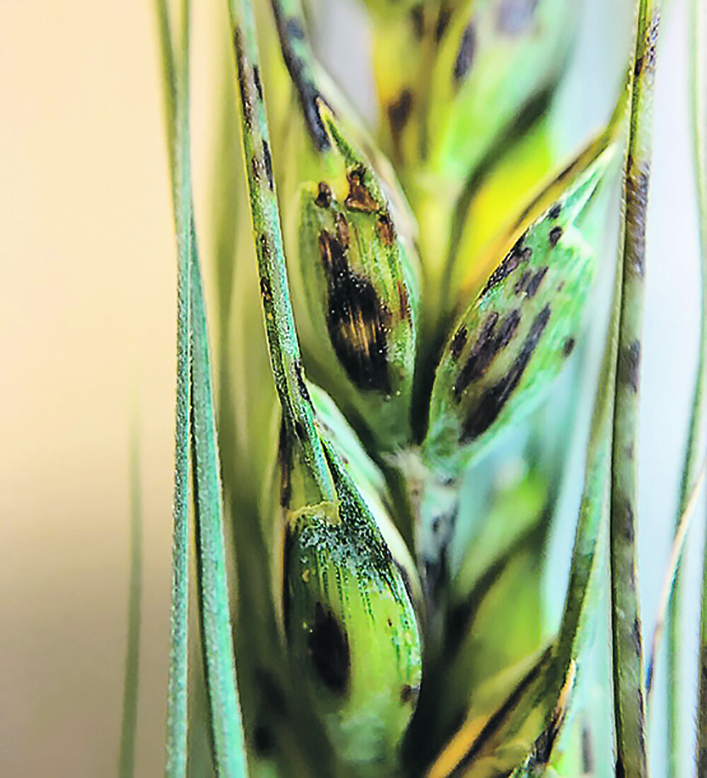
If seed comes from a field that had BLS, storage is one possible way to reduce infection.
“Research has indicated that depending on storage conditions, the seed bacterium can be decreased by 79 percent after six months of storage but will require 63-81 months to completely die,” says the BLS document from the prairie wheat and barley groups.
Bacterial leaf streak can survive in wheat residue, but it doesn’t persist in the soil like fungal pests. Once the residue decomposes, the bacterium doesn’t have a host and it dies. So, soil and crop stubble is a minor source of infection.
Picking the right wheat variety might make a small difference with BLS, as certain cultivars in Western Canada could be less susceptible to bacterial leaf streak.
But, for now, the difference between cultivars is unclear.
“The little bit of testing has been done (but it) hasn’t sorted out if there is tolerance,” Harding said.
“To my knowledge we don’t yet have any resistant cultivars…. Unless that variety is coming out of the United States, where they do have some genetic resistance.”
In North Dakota, agronomists and plant pathologists have developed a rating scale to rank the susceptibility of wheat cultivars to BLS.
The research and efforts to manage bacterial leaf streak are more advanced in North Dakota because the disease is more prevalent than in Canada.
“I consider it to be the new No. 1 foliar disease in wheat, as it can be quite devastating in a given field,” said Andrew Friskop, a cereal crop pathologist at North Dakota State University, in 2020.
In August of 2019, NDSU disease scouts found BLS in 31 percent of wheat fields and researchers detected “high levels” in research plots.
An NDSU document on bacterial leaf streak says it’s difficult for growers to find clean seed because BLS is everywhere the state.
In Alberta, growers and others in the wheat sector have realized that BLS could become a major threat to production. Grower awareness and recognition of the disease is much better than it was a few years ago. But testing, varieties and other options will be needed to manage the disease.
“It is becoming a little more entrenched, every year,” Harding said. “At the end of the last season, the industry realized this isn’t something that’s… going to go away. We have to start developing some tools to manage this.”


